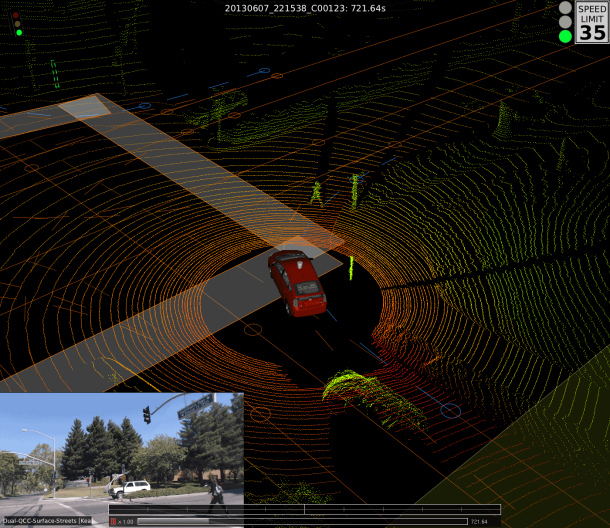University College London Scientist, Simon Lewis was just minding his own business, mapping and measuring tropical forest trees in Gabon, when his 3D laser scanner picked up a friendly visitor.
We took a laser-scanner (LiDAR) to Gabon as new way of measuring trees. We accidentally shot this:

Simon Lewis
@SimonLLewis
We took a laser-scanner (LiDAR) to Gabon as new way of measuring trees. We accidentally shot this:

The interloper, an elephant who goes by the name of Billy, was picked up using LiDAR, a laser scanning technology that's used in everything from police speed guns to classified military detection systems. It's also one of the tools that helps Google's self-driving cars navigate through obstacles and traffic, as you can see below.

If Google's self-driving car is to succeed, it'll be largely on the merits of LiDAR, which continuously generates an intricate 3D contour map of the car's immediate surroundings. As you can see from Lewis' elephant snapshot, the technology spits out a pretty serviceable rendering of Billy the elephant's hulking mass — a promising notion for those who might be weary of the self-driving car's ability to sense the outside environment.
3-D scan by Andy Burt, Aida Cuni Sanchez, University College London & Kim Calders, U. Wageningen
